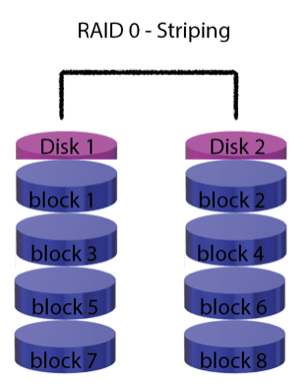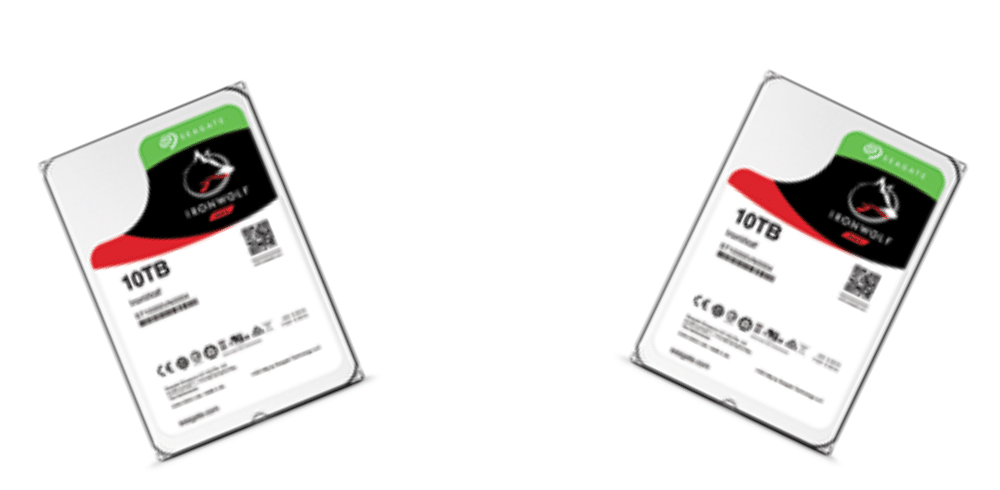The primary use case for RAID0, also referred to as striping, is I/O speed. Data can be read from and written to a RAID0 array significantly faster than that of a single disk or other RAID types. Essentially, adding another disk to a RAID0 pool will increase the performance of the RAID group at close to the line speed of the individual drive. This is achieved by allocating the data into blocks and spreading the blocks over multiple disks. When a read or write is performed it doesn’t need to wait as long for the drive to be ready.
The primary use case for RAID0, also referred to as striping, is I/O speed. Data can be read from and written to a RAID0 array significantly faster than that of a single disk or other RAID types. Essentially, adding another disk to a RAID0 pool will increase the performance of the RAID group at close to the line speed of the individual drive. This is achieved by allocating the data into blocks and spreading the blocks over multiple disks. When a read or write is performed it doesn’t need to wait as long for the drive to be ready. This gives you an immense boost in speed and performance.
There is another advantage of RAID0 though. Of course when you pool two or more drives in a RAID0 group you'll gain performance, but you also gain capacity. A RAID0 striped setup will also pool capacity. This means that if you have 2 10TB hard drives in RAID0 – you will have an available capacity of 20TB on the array.
With speed in RAID0 comes risk; there is no fault tolerance on RAID0. If you lose any disk in a RAID0 array – you will loose all data on the array because all the data is spread across all disks. As such, RAID0 is best used in cases where performance is more important than anything else and the working set of data is backed up or copies reside elsewhere. RAID0 is often an acceptable trade-off for workloads like data analytics where increasing the computational power of a server is worth the potential risk of lost data as time to insights is more valuable than protecting what amounts to be duplicate data.


